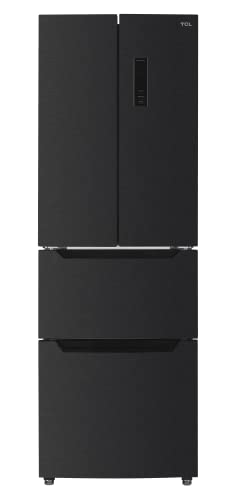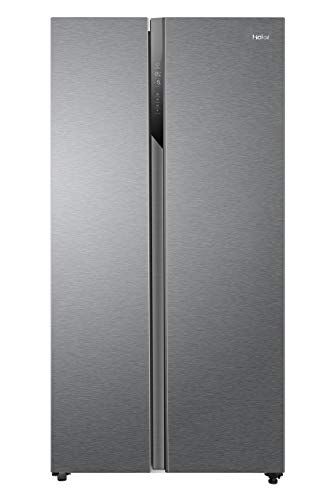
Fridge Deals Uk
Add a review FollowOverview
-
Founded Date July 13, 1951
-
Sectors Restaurant
-
Posted Jobs 0
-
Viewed 43
Company Description
9 . What Your Parents Teach You About Fridge UK
The Comprehensive Guide to Refrigerators in the UK
Refrigerators are an important home appliance in every home, serving a crucial function in food conservation and security. The UK market uses a varied range of fridge types, sizes, functions, and brands. This post intends to offer a thorough understanding of refrigerators available in the UK, including their features, energy efficiency, and factors to consider when making a purchase.

Kinds Of Refrigerators Available in the UK
When trying to find a refrigerator, it is crucial to comprehend the numerous types offered. Each type features its own set of functions and functions, dealing with different requirements and choices. The most common kinds of refrigerators discovered in the UK consist of:
1. Leading Freezer Refrigerators
- Description: The traditional design, featuring the freezer compartment on top.
- Pros: More budget-friendly, large, simple access to fresh food.
- Cons: Limited freezer space, the top may be less practical for bulk products.
2. Bottom Freezer Refrigerators
- Description: Freezer is located at the bottom, allowing simpler access to fresh food.
- Pros: Greater benefit, better presence of fresh items.
- Cons: Usually more pricey, some may battle with big frozen products.
3. Side-by-Side Refrigerators
- Description: Features 2 vertical compartments, one for the fridge and one for the freezer.
- Pros: Ample storage space, easy to gain access to both frozen and fresh foods.
- Cons: Wider footprint, they might not fit in smaller kitchens.
4. French Door Refrigerators
- Description: Combines functions of bottom freezers and side-by-sides, with 2 doors for the Fridge uk on top.
- Pros: Stylish style, large, and frequently includes innovative features.
- Cons: Higher rate point, aligns inadequately with smaller sized kitchen area designs.
5. Compact Refrigerators
- Description: Smaller models developed for limited spaces.
- Pros: Ideal for small houses or offices, energy-efficient.
- Cons: Limited storage capability, may do not have features.
6. Integrated Refrigerators
- Description: Designed to blend perfectly with cooking area cabinets.
- Pros: Custom fit, aesthetic appeal, increases home worth.
- Cons: Higher cost, may provide less flexibility in positioning.
7. Smart Refrigerators
- Description: Equipped with Wi-Fi and clever technology features.
- Pros: Advanced features like touch screens and internal video cameras.
- Cons: Expensive, more complex to fix.
| Refrigerator Type | Accessibility | Average Price Range | Energy Efficiency |
|---|---|---|---|
| Top Freezer | Moderate | ₤ 300 – ₤ 600 | Typical |
| Bottom Freezer | High | ₤ 400 – ₤ 800 | Above Average |
| Side-by-Side | Easy | ₤ 800 – ₤ 1500 | Differs |
| French Door | High | ₤ 800 – ₤ 2000 | High |
| Compact | Restricted | ₤ 200 – ₤ 500 | Typical |
| Integrated | Customized | ₤ 1000 – ₤ 2500 | High |
| Smart | Variable | ₤ 1200+ | High |
Key Features to Consider
- Energy Efficiency: Look for designs that are energy-efficient. In the UK, home appliances are rated from A (most effective) to G (least effective). An A+ score and above can lead to significant energy cost savings.
- Capacity: Choose a fridge with enough capacity for your household. A standard guideline is 100-200 liters per individual.
- Noise Level: Consider models that run quietly, especially if the kitchen area is near living areas.
- Cooling Technology: Features like frost-free innovation deserve the investment, as they lessen upkeep.
- Adjustable Shelves: Having adjustable racks improves the flexibility to store bigger products.
- Temperature Control: Check for user friendly temperature level controls and zones for various kinds of food.
- Design: Choose the design and color that matches your kitchen aesthetic, whether you prefer a modern-day stainless steel appearance or a traditional retro finish.
Buying Tips
- Identify Your Needs: Consider your cooking practices, family size, and kitchen space.
- Set a Budget: Refrigerators come in various rate varieties. Develop a budget plan before you begin going shopping.
- Research Study Energy Ratings: Invest in energy-efficient designs to conserve on energy bills.
- Read Reviews: User experiences can provide insights into reliability and efficiency.
- Compare Brands: Some brands are understood for their durability while others might provide more ingenious functions.
Regularly Asked Questions (FAQs)
1. How long do refrigerators generally last?
- Fridges normally last between 10 to 20 years, depending on the brand and how well they are maintained.
2. Exist any upkeep tips for extending the life of a refrigerator?
- Regularly clean the coils, examine the door seals, and periodically thaw if required to keep optimum performance.
3. What is the very best size refrigerator for a household of four?
- For a household of four, a refrigerator with a capability of around 400-600 liters is typically sufficient.
4. Do I require to stress over energy consumption when purchasing a refrigerator?

- Yes, energy intake is necessary. Search for systems with high energy efficiency scores to decrease month-to-month costs.
5. Should I choose a fridge with a water and ice dispenser?
- This feature can be convenient, specifically for households. However, it may need more maintenance than basic designs.
Acquiring a refrigerator is a substantial choice for any family in the UK. With various types offered, each with its special functions and advantages, it is crucial to examine specific requirements before making a choice. By considering aspects such as energy effectiveness, capacity, and style visual appeals, consumers can select a fridge that aligns well with their way of life, eventually improving their kitchen experience while protecting food quality and freshness.
